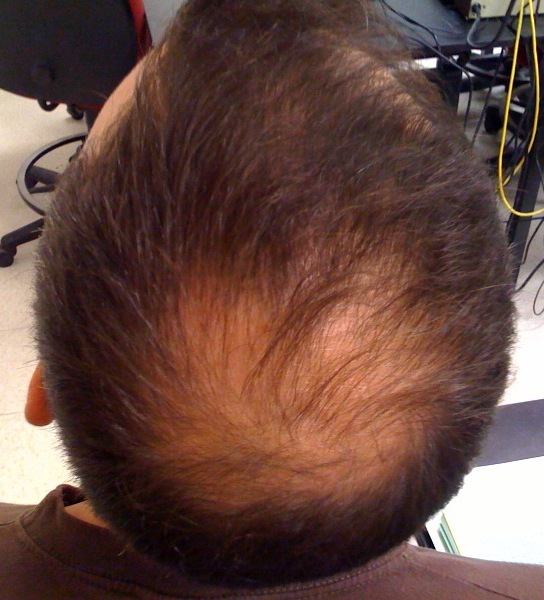The word that stress is the root of all diseases now also applies to’hair loss’. It has been known that stress causes hair loss, but the correlation between chronic stress and hair loss has not been identified. However, a new study revealing the fundamental cause of stress hair loss has recently been published, attracting attention.
Researchers at Harvard University in the U.S. have shown through experiments that chronic stress is associated with dysfunction of hair follicle stem cells. The researchers found a correlation between stress and hair loss by injecting stress hormones into mice. They also predicted that hair loss treatment would be possible with targeted treatment through the papillary GAS6 molecule.
Scientists continue to work to conquer hair loss. In addition to this study, recent research on hair loss treatment through re-creation of new drugs using treatments for hyperlipidemia and rheumatoid arthritis has opened up the possibility of new hair loss treatment.

Hair grows, degenerates, and rests (rest) throughout life and is regenerated. When you are under a lot of stress, the resting period is prolonged, leading to hair loss. Ⓒ Wikimedia
stress, Slows hair follicle regeneration
On the 31st of last month (local time), Nature, an international scientific journal, published a study on hair follicle stem cells by researchers in the Department of Stem Cell and Regenerative Biology at Harvard University in the United States. Through scientific experiments, the researchers revealed the cause of stress hair loss and the underlying mechanism of the hair loss process.
In general, human hair is produced through three stages of growth (anagen), degeneration (cayagen), and telogen. About 85-90% of the hair regeneration stage belongs to the growing stage. Hair follicle stem cells (HFSCs, hair-follicle stem cells) are activated to regenerate hair follicles and hair, and hair grows during the growth phase.
In the degenerative stage, hair growth stops. The period of hair loss is in the resting state. Hair does not regenerate new tissue when it is telogen. During this period, the hair remains dormant for a while and eventually falls out.

Hair loss occurs when the telogen state is prolonged during the hair growth cycle. Ⓒ Wikimedia
The researchers found out through experiments in mice that when stressed, stress hormones affect hair follicle stem cells, which prolongs the resting period and causes hair loss.
The researchers found that the follicular stem cells in a mouse model of chronic stress remained in a state of resting for long periods of time. This is because the hormones of this group were secreted more than usual. Corticosterone (corticosterone) is a type of corticosteroid hormone produced when mice are under stress.
The researchers injected the stress hormone corticosterone into normal mice and observed the association between stress and hair follicle stem cells. Corticosterone adversely affected the hair production cycle in mice. When this hormone was injected, the hair follicle stem cells had a long-term resting effect even in the follicular stems of normal mice.
Because the stress hormone (corticosterone) prolonged the resting period, hair follicles could not be regenerated for a long time. When corticosterone was removed, the hair follicle stem cells in mice shortened the resting period and the growth period rapidly repeated.

Researchers at Harvard University conducted an experiment on the effect of stress hormones on hair growth. Ⓒ Nature
In fact, it wasn’t the hair follicle stem cells that the stress hormone actually worked on, but the dermal papilla cells at the root of the hair follicle. The researchers found that stress hormones precisely blocked the secretion of’GAS 6’by dermal papilla cells. ‘GAS 6’is a molecule that activates hair follicle stem cells.
Corticosterone inhibits’GAS 6’to regulate hair follicle stem cell arrest. These results mean that hair loss can be treated by activating’GAS 6′. In order to be applied to the human body, additional research is needed, such as enhancing safety, but the researchers predicted that fundamental hair loss treatment would be possible if the regenerative function is saved through the molecule of the papillary’GAS 6′. (Go to thesis)
Scientists try to cure hair loss, Is it a new way?
Scientists’ efforts to conquer hair loss continue. Recently, Professor Young Lee’s team in the Department of Dermatology at Chungnam National University Hospital opened up the possibility of hair loss treatment by finding the locations of 34 genes and 39 mutations that are highly related to the onset of alopecia areata. The research team revealed that simvastatin, which is used as a treatment for hyperlipidemia, has a potential as a treatment for alopecia areata by reducing cytokines in the SCI international journal’Journal of Dermatological Science’.

A green light was turned on for the treatment of hair loss, which had been considered as an unknown area where fundamental solutions were difficult. Ⓒ Wikimedia
In the case of alopecia areata in children, the possibility of treating hair loss through the reinvention of new drugs has opened up. In overseas pharmaceuticals, oral JAK inhibitors, known as a treatment for rheumatoid arthritis, are showing an improvement in pediatric hair loss, and various studies and clinical trials are in progress to approve new drugs.
Stemmore, a biopharmaceutical development company led by Professor Seong Jong-hyuk of Yonsei University College of Pharmacy, recently patented a research that replaces hair transplantation by activating dermal papilla cells, which are key cells that make up hair follicles, and is seeking a new treatment method for hair loss different from the previous one.
It is expected that the constant efforts of scientists to conquer hair loss will provide a positive direction for’hair loss treatment’, which is considered to be an unknown area that humanity has not solved.
(1085)
